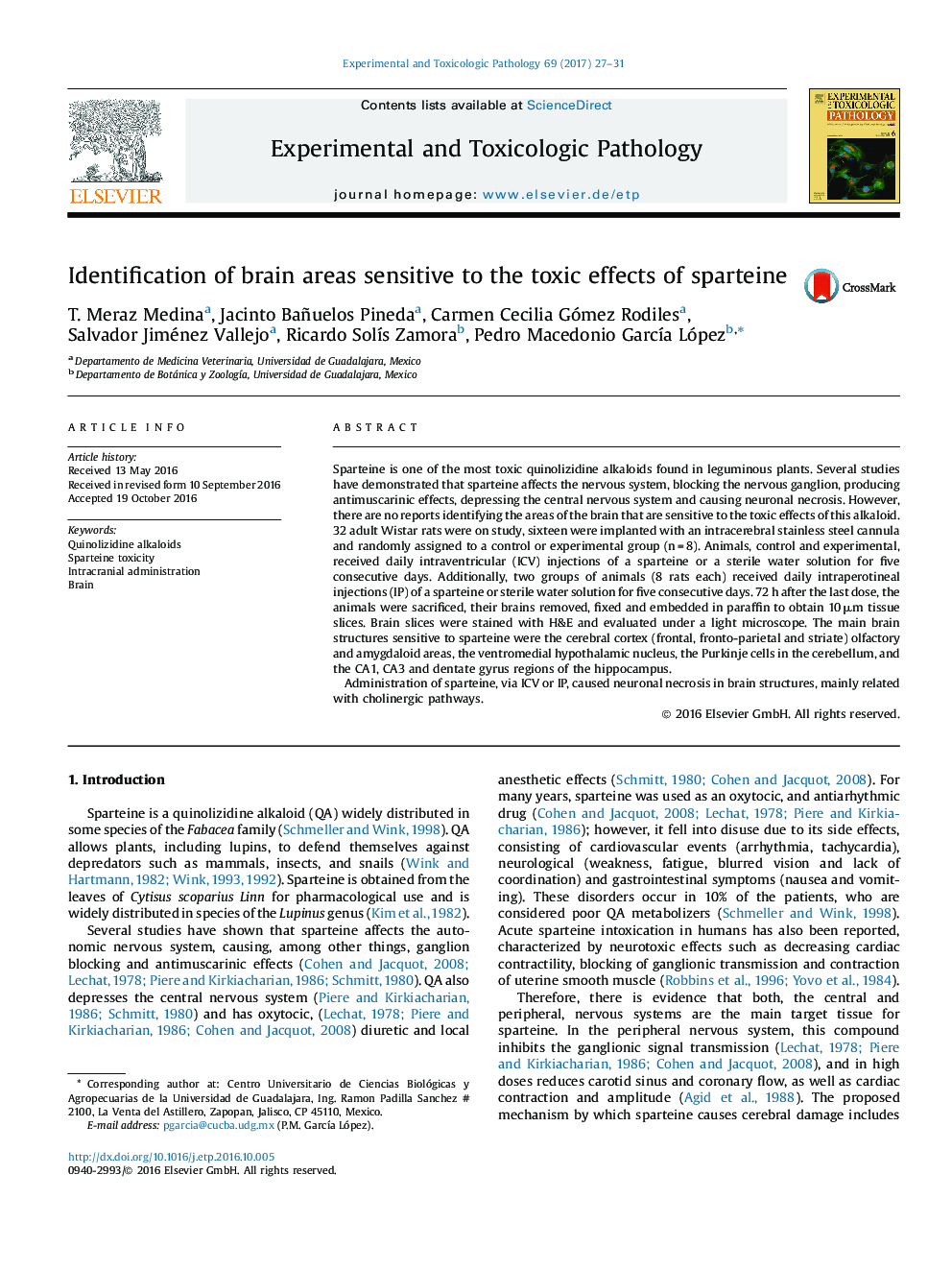| کد مقاله | کد نشریه | سال انتشار | مقاله انگلیسی | نسخه تمام متن |
|---|---|---|---|---|
| 5549836 | 1402903 | 2017 | 5 صفحه PDF | دانلود رایگان |
Sparteine is one of the most toxic quinolizidine alkaloids found in leguminous plants. Several studies have demonstrated that sparteine affects the nervous system, blocking the nervous ganglion, producing antimuscarinic effects, depressing the central nervous system and causing neuronal necrosis. However, there are no reports identifying the areas of the brain that are sensitive to the toxic effects of this alkaloid. 32 adult Wistar rats were on study, sixteen were implanted with an intracerebral stainless steel cannula and randomly assigned to a control or experimental group (n = 8). Animals, control and experimental, received daily intraventricular (ICV) injections of a sparteine or a sterile water solution for five consecutive days. Additionally, two groups of animals (8 rats each) received daily intraperotineal injections (IP) of a sparteine or sterile water solution for five consecutive days. 72 h after the last dose, the animals were sacrificed, their brains removed, fixed and embedded in paraffin to obtain 10 μm tissue slices. Brain slices were stained with H&E and evaluated under a light microscope. The main brain structures sensitive to sparteine were the cerebral cortex (frontal, fronto-parietal and striate) olfactory and amygdaloid areas, the ventromedial hypothalamic nucleus, the Purkinje cells in the cerebellum, and the CA1, CA3 and dentate gyrus regions of the hippocampus.Administration of sparteine, via ICV or IP, caused neuronal necrosis in brain structures, mainly related with cholinergic pathways.
Journal: Experimental and Toxicologic Pathology - Volume 69, Issue 1, January 2017, Pages 27-31
